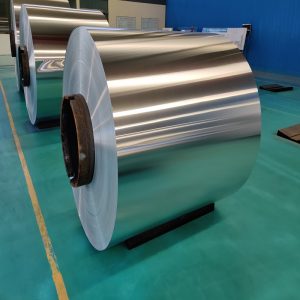L’alluminio è un materiale essenziale per molti settori, compreso il trasporto, costruzione, e imballaggio. Tuttavia, è noto che il processo di produzione dei fogli di alluminio ha un'impronta di carbonio significativa. In recent years, the aluminum sheet industry has been working to address these concerns by implementing new production processes and technologies that reduce emissions.

Energy-efficient production processes
One of the most significant ways that the aluminum sheet industry is reducing its carbon footprint is by implementing energy-efficient production processes. Aluminum is traditionally produced through a process that involves electrolysis, which requires large amounts of electricity. Tuttavia, new production processes that use renewable energy sources, such as solar and wind power, are being developed. These energy-efficient processes not only reduce carbon emissions but also lower production costs.
Recycling
Recycling is another way that the aluminum sheet industry is addressing concerns about the carbon footprint of the production process. Aluminum is 100% recyclable, meaning that it can be melted down and used to create new products. Recycling aluminum uses significantly less energy than producing new aluminum, and it also reduces the amount of waste that ends up in landfills. The industry is working to increase the recycling rate of aluminum by investing in new technologies and infrastructure.
Reducing waste
Another way that the aluminum sheet industry is reducing its carbon footprint is by reducing waste. Aluminum production generates a significant amount of waste, including by-products such as red mud and greenhouse gases. The industry is working to reduce waste by developing new technologies that can capture and reuse these by-products. Inoltre, the industry is investing in new processes that generate fewer greenhouse gases, such as inert anode technology.
Sustainable sourcing
The aluminum sheet industry is also addressing concerns about the carbon footprint of the production process by sourcing materials sustainably. The industry is working to source raw materials from sustainable sources, such as responsibly managed forests and recycled materials. Inoltre, the industry is working to reduce the amount of energy required to extract and transport raw materials, further reducing its carbon footprint.
Collaborative efforts
Finally, il lamiera di alluminio industry is addressing concerns about the carbon footprint of the production process through collaborative efforts. The industry is working with governments, research institutions, and other stakeholders to develop new technologies, reduce emissions, and promote sustainability. By working together, the industry can create a more sustainable future for aluminum production.

